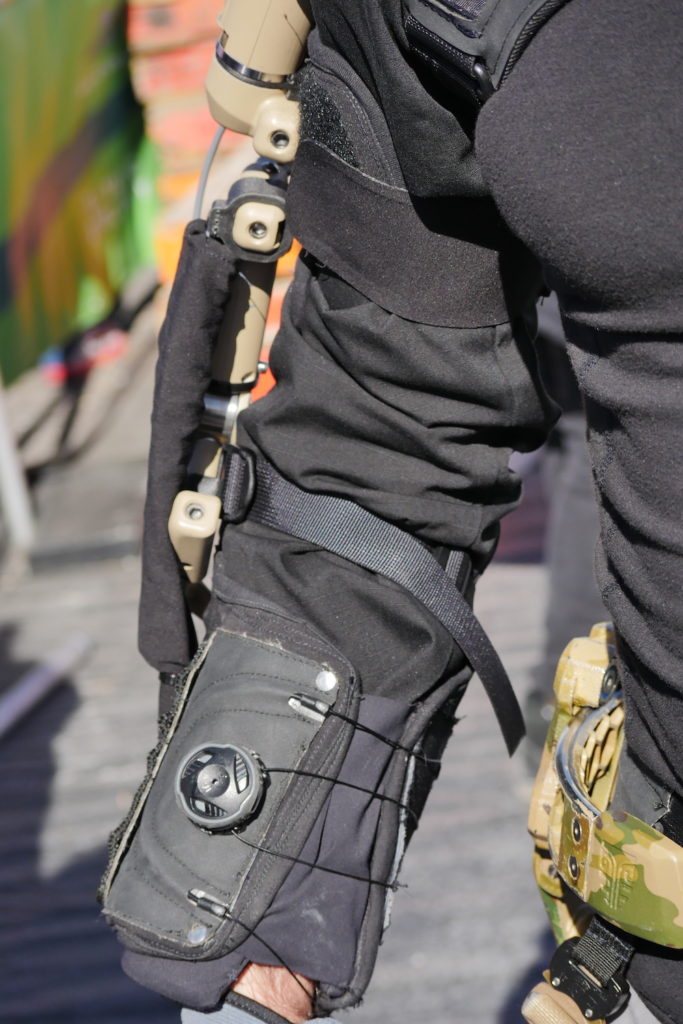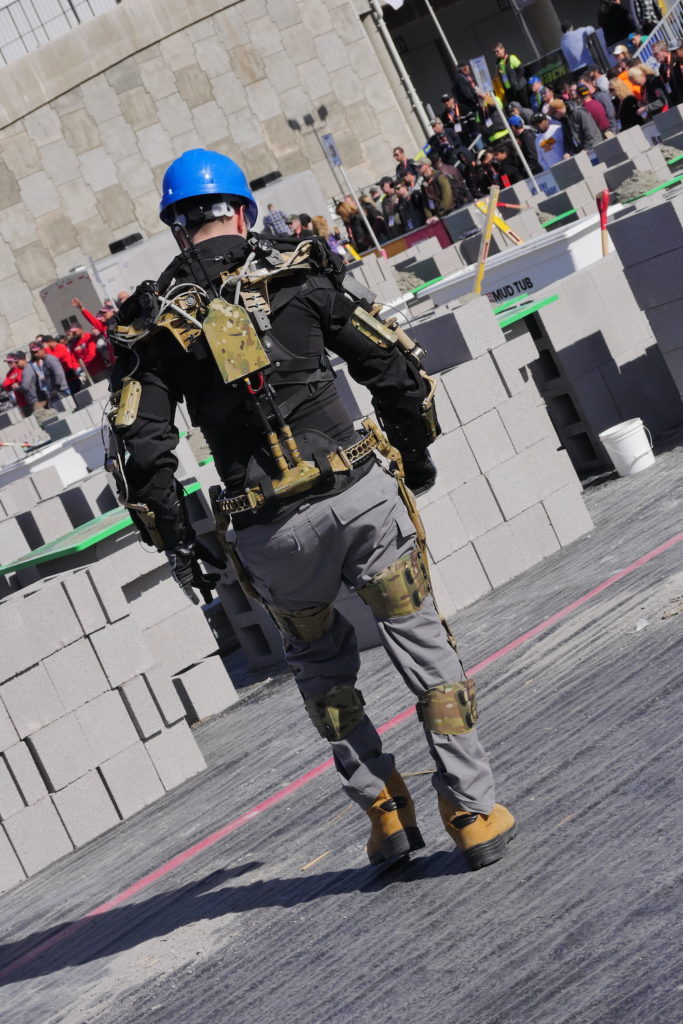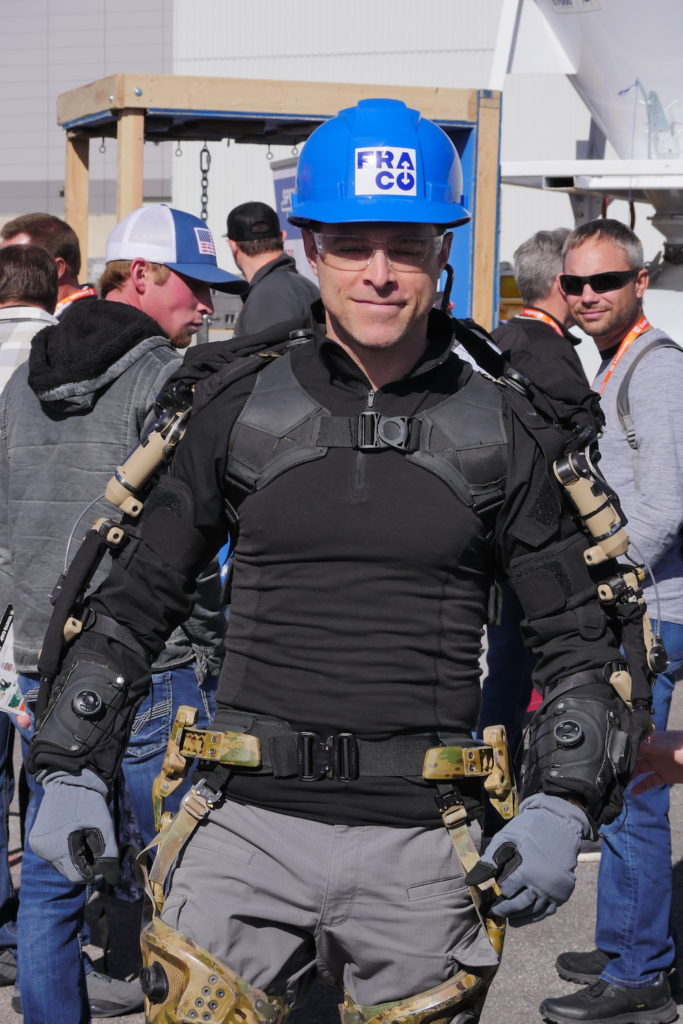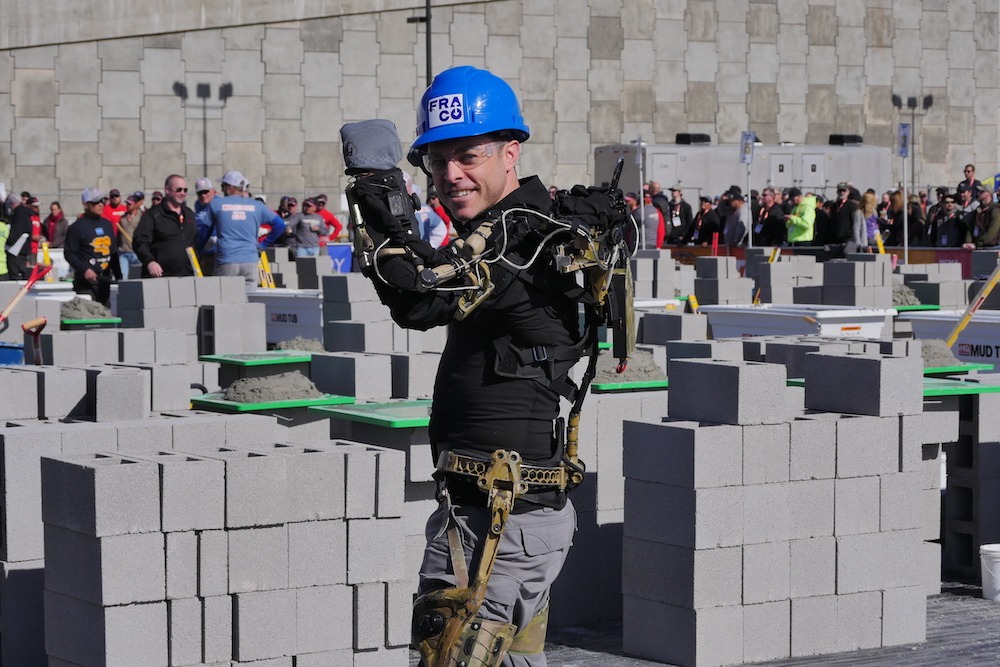Words: Corinne Dutil
Photos: MASONRY Magazine
When we think of exoskeletons, the image of Iron Man might be the first thing that comes to mind…of course, who wouldn’t want to try out a suit like that! But the exoskeleton for the masonry industry, which we will be sharing with you today, didn’t come out of a movie script. It came from the collaboration between an innovative company, Mawashi Science & Technology, and a visionary entrepreneur and bricklayer, Mr. Armand Rainville, who wanted to better the lives of the men & women working in that trade.
Armand Rainville knows everything about bricklaying. He has done it, he has run teams who did it, he bought a company that manufactures tools to help people do it, and now, 28 years later, Fraco Products is a leader in the mast climbers and hoist industry. His daughters, Emmanuelle & Julie, are now the co-presidents of Fraco, but Armand is still there, supporting them and staying one step ahead of competition, with innovation on his mind.
One day Armand had an idea, “What about a suit that could help bricklayers stay healthy, avoid injury, help more women join the trade and keep the aging workforce laying bricks longer?” He knew exactly where to go to transform into reality, his vision of a suit, made specifically for the masonry industry. He got in his car and drove about 20 miles, to Saint-Jean-sur-Richelieu, to meet with the team at Mawashi who had already developed a suitable solution for his vision; a passive load-bearing exoskeleton.

Mawashi Science & Technology is a Canadian leading-edge defense innovation company that develops game-changing human augmentation systems, exoskeleton technologies and wearables. With a unique combined expertise in human factors engineering, biomimicry, new product development, multi-physics engineering, industrial design and system integration, Mawashi assures to its clients a technological advancement, a competitive advantage, and superiority in the industry.
They understand the operational needs of war fighters and Armed Forces in terms of protection and survivability, mobility and flexibility, load carriage and distribution, as well as heat evacuation and management. Armand asked them to do all that, but instead of a soldier, it was going to be for a bricklayer. So how does a company that makes exoskeletons for the army, go about switching it up for the needs of a bricklayer? Mr. Jean-Marc Sheitoyan, Chief Strategy Officer at Mawashi, explains it like this:

“In order to adapt our tactical passive exoskeleton for the needs of the masonry industry, we started by looking at the various tasks performed by bricklayers in collaboration with the team at Fraco. This study outlined the need for an upper limb exoskeleton structure to support the weight of heavy bricks and masonry tools during repetitive movements. We then imagined an ergonomic low-profile and body-molded aluminum structure, comprising mechanical joints aligned with the elbow and shoulder articulations, to ensure compatibility with human biomechanics and maximize the ease and range of motion of the upper limbs.”
Five months later, we have the Fraco Exoskeleton by Mawashi! Created specifically for bricklayers, this hybrid system combines passive and quasi-passive actuation to support and assist the worker in lifting and placing masonry blocks as well as manipulation of masonry tools. It does not restrict the mason’s ease and range of motion when using the trowel to apply mortar and it reduces muscle fatigue during various tasks involving the bricklayers’ upper limbs.

The exoskeleton’s quasi-passive joint locking mechanism is positioned directly at the arm’s articulations, which can support up to 15 lbs. per arm when the arm is outstretched, and 26 lbs. per arm when the arm is in a 90-degree angle. It is very low in energy consumption and the battery can last several days for standard masonry tasks. The passive lifting assistance mechanism consists of an elastic system coupled with an optimized spring-cam mechanism that can lift up to 10.5 lbs. per arm.
The project will be carried out in 3 phases: the initial prototype, the final prototype, and the finished product ready for distribution.
Fraco brought the initial prototype to the World of Concrete in February 2020, where crowds gathered at their booth every hour to see what most called, “the coolest innovation at the show”. The next phase involves fine-tuning the exoskeleton, and incorporating things like a safety harness, to make it even better for masonry workers.
At the time of this writing we are in the middle of the COVID-19 crisis, so the project might be delayed, but we are aiming to complete the finished product so that it could be ready for distribution by summer 2021. Only the upper part will be marketed, but eventually, if the demand is there, a full-body exoskeleton could be made available.
If you are a bricklayer, you are either ready to buy yours, or you are thinking this is too good to be true…but it’s real! It is not action movie stuff! Fraco believes that this is the tool of the future for bricklayers. The weight of the upper limb system will be between 8 and 12 lbs. depending on the selection options. Once the exoskeleton has been adjusted to the right size, and the user is acclimatized to the system, it will take about 60 to 90 seconds to suit up.

Will it make you win speed contests? No. But what it will do is take off the load of the bricks that weighs down your body every day, and allow you to have the same endurance at 4 PM as you do at 8 AM. It will also level the playing field for the workforce in masonry. Women who want to join the industry will be able to have more endurance, and the same thing goes for older bricklayers who have slowed down physically, because of endurance, age, or injury.
Technology can be scary, but it doesn’t have to be. When combined with the skills and brains of experienced tradesmen and women, technology becomes a lever, an added tool to help the industry and the well-being of the worker. There are many different tools to help bricklayers, but this one is the only tool that can greatly reduce the impact of bricklaying on the body of the worker.
At Fraco, they believe the most important asset of any company or industry is the people, their health and well-being. A tool like the exoskeleton can help the physical health, but also the mental health. It can keep people whose bodies are forcing them to step down working. It can help with the lack of labor, by bringing more women to the industry. It can’t hurt anyone—it can only improve productivity, safety and well-being.
To follow the exoskeleton progress closely, feel free to like the Fraco LinkedIn page to get all the updates.
So, what do you think? Is this too good to be true, or are you ready to order yours?
